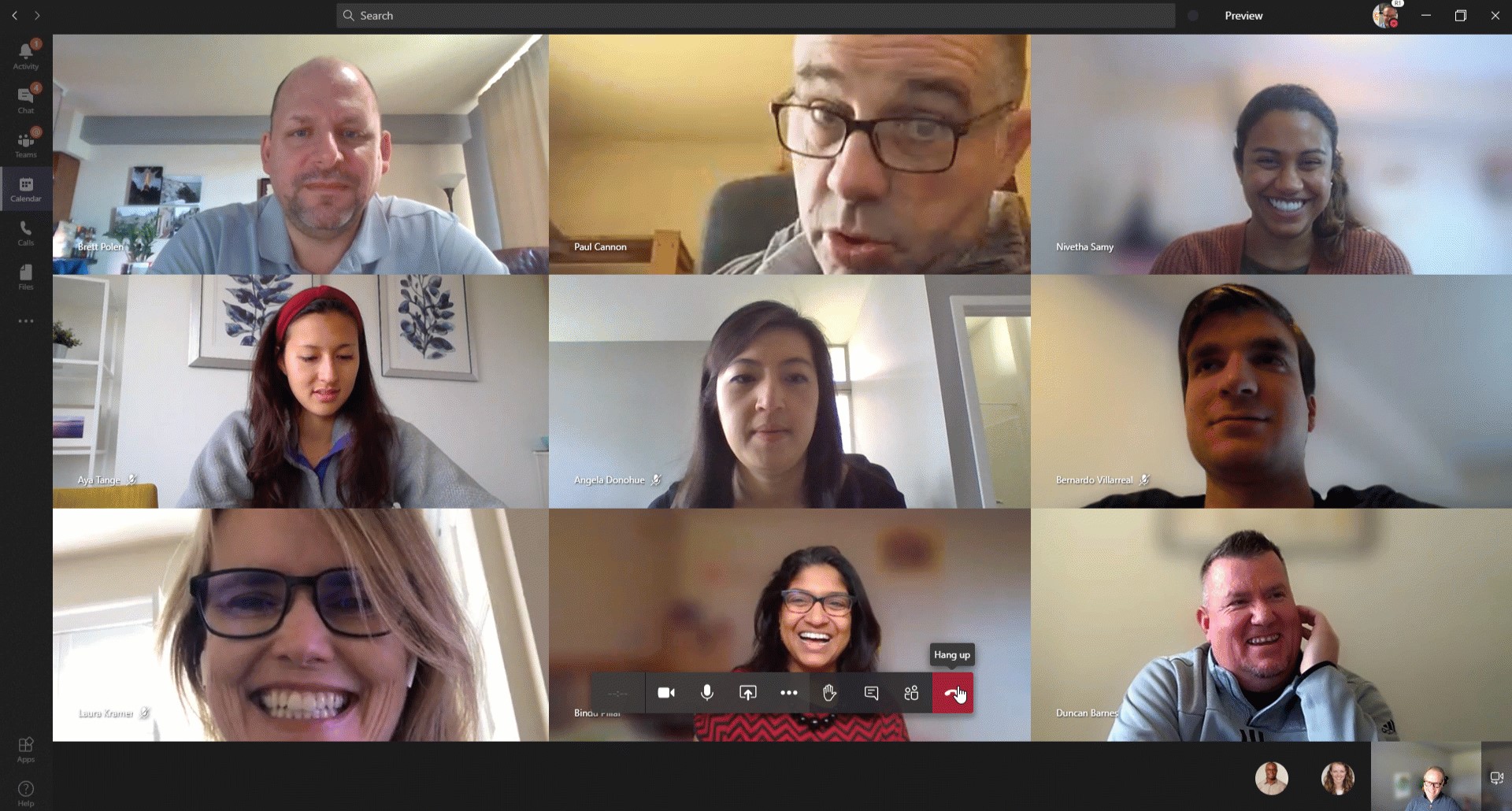Microsoft is increasing the number of participants who can be viewed simultaneously on the Teams meetings stage from four to nine. The company made the announcement introducing new features to the service.
How this works is that it will optimize for attendees who have video-enabled. It will then place the remaining audio-only participants below the meeting stage. Microsoft notes, “the layout will adapt, based on the user bandwidth and alter the number of videos shown to provide the best meeting experience“.
In addition to this, the company also announced other features. These include Raise Hands, – a feature that lets meeting participants identify they want to speak -, one on one live recording, Background effects and Background Blur for iOS.
“The new capabilities will further the experience for our customers“, Microsoft says.
The new features are live and being rolled out in stages. Microsoft says it will take a few weeks if you don’t have it yet.
Microsoft Teams has seen a surge in usage since the outbreak of Covid-19 global pandemic. It currently has more than 75 million daily active users. Recording more than 200 million meeting participants in a single day in April.
In healthcare alone, CEO, Satya Nadella shared there were more than 34 million Teams meetings in the past month. In education, more than 183,000 educational institutions now rely on Teams.
Microsoft recently announced it will start allowing users without an internet connection and those with low bandwidth connectivity to read chat messages on Microsoft Teams platform.
- YouTube wouldn’t build an app for the Apple Vision Pro, so Someone did! Introducing Juno
- What is Microsoft 365?
- Get to know Norton Genie app?
- Microsoft Copilot on iOS and Android get upgrade
- Microsoft’s new OneDrive design is out now!
- Sudo command comes to Windows 11
- Google has announced that its first cloud region in Africa is now open for business.
- Apple Vision Pro Review
- Apple’s first-party Podcasts app
- What is Amazon presents Diffuse to Choose?

